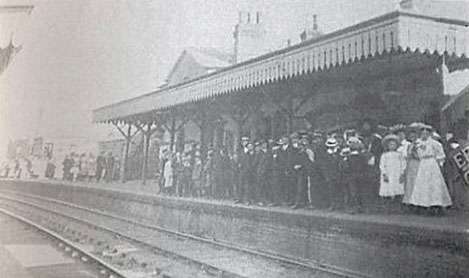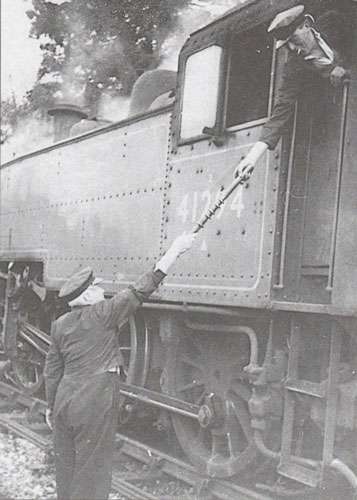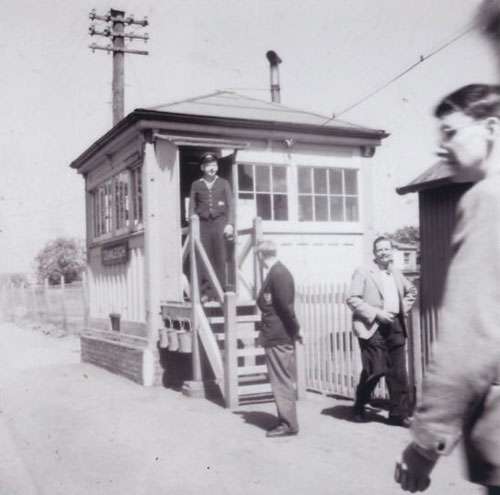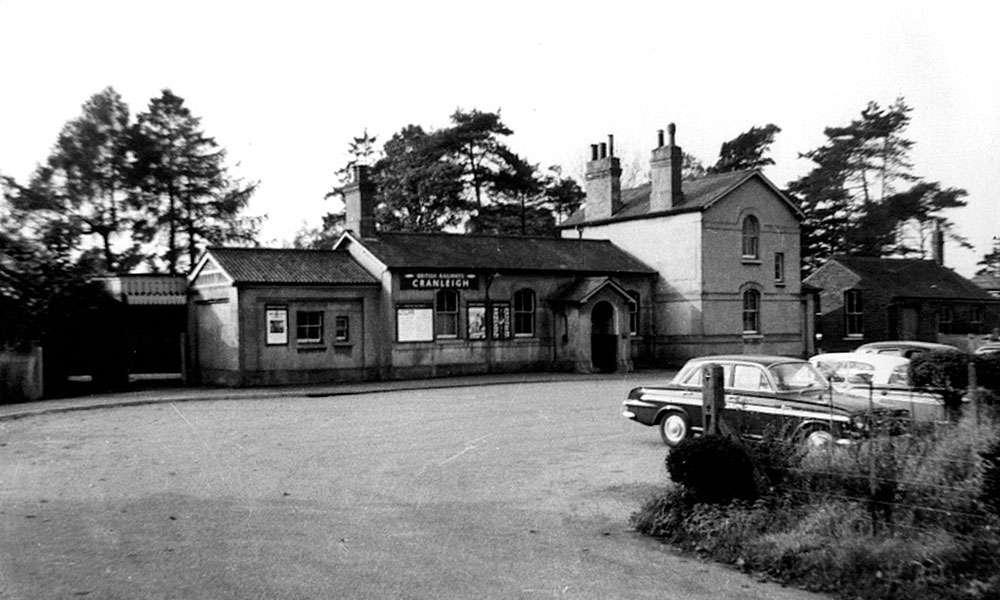
The 1960s were the era of ‘the Beeching cuts’. The brilliant Dr Richard Beeching, physicist and engineer, was seconded from ICI to become chairman of the British Railways Board, with the government brief to increase the efficiency of the nationalised railway system in Great Britain. He produced a report, ‘The Reshaping of British Railways’ (1963), which called for unprofitable lines to be closed, and the rest to be restructured. The Horsham to Guildford Direct Railway line was the only railway line to be cut in Surrey. It had been opened on October 2nd 1865, with great celebrations, as part of the London, Brighton and South Coast Railway.
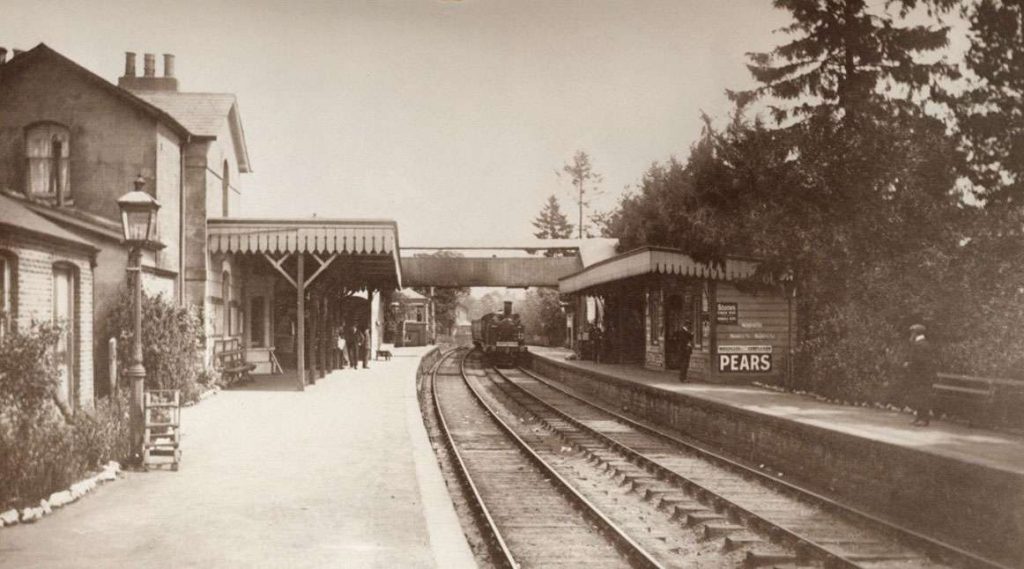
Cranleigh station in 1908, with the ubiquitous Pears Soap advert (Frith)
Top Photo: The station forecourt in the 1960s
It was a single line railway, with five stations at first (Bramley, Cranleigh, Baynards, Rudgwick and Slinfold). The owner of Baynards, the Revd. Thomas Thurlow, made it a condition of allowing the line to go through his land, that Baynards should have its own station. Four trains ran in each direction daily, so that initially only one engine was needed for the line. Later, when passing places were made at some stations, two engines were employed and the service increased to eight trains a day. A railway crossing, with gates, was made in Knowle Lane. Next to the station was a large goods yard, with three coal merchants based there.
The Sunday School outing of 1910
At first the railway primarily transported freight. Coal for the gasworks and cattle feed for the farms were brought into Cranleigh, and timber and farm produce taken out. Farmers transported their cattle to market in Guildford and Horsham. Cranleigh School was closely linked to the railway for transporting pupils: in fact, the school’s opening had to be postponed for a month, as the railway’s completion was delayed.
Handing the staff to the driver in the passing-place at Cranleigh station, giving permission to proceed to the next station (Cranleigh Voices)
The train was also a valuable link for Cranleigh people to Guildford and London. London commuters, Guildford workers and schoolchildren used it. People could travel by train to the seaside. The annual parish outing on a Wednesday in summer was a highlight of the year, when hundreds of people went to the coast – usually to Littlehampton. In 1934 there were twelve coaches, all packed out.
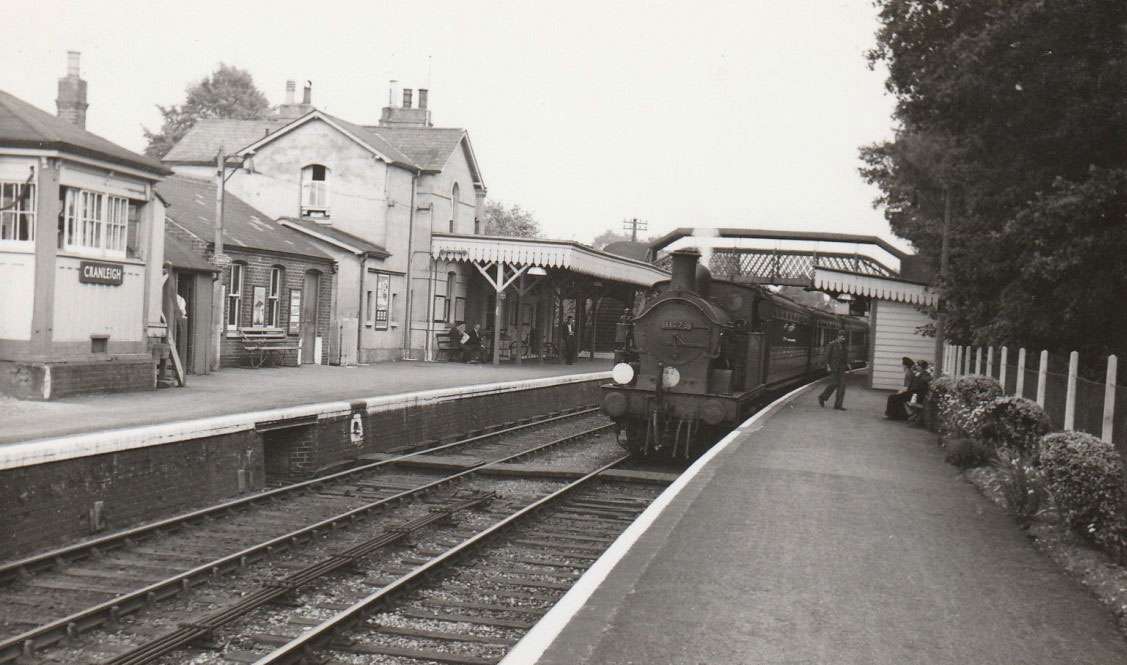
The railway station and train in the 1950s – frozen in time (courtesy of Michael Miller)
A tragedy occurred on December 16th 1942, when a train taking Christmas shoppers to Guildford was machine-gunned and bombed by a German Dornier 217 plane at Bramley. All the 42 passengers were injured, and seven were killed, including the driver and guard, and one Cranleigh girl, Alice Fortune, aged 22.
A happier memory is that Baynards station was used in the BBC television adaptation of ‘The Railway Children’ and several other films.
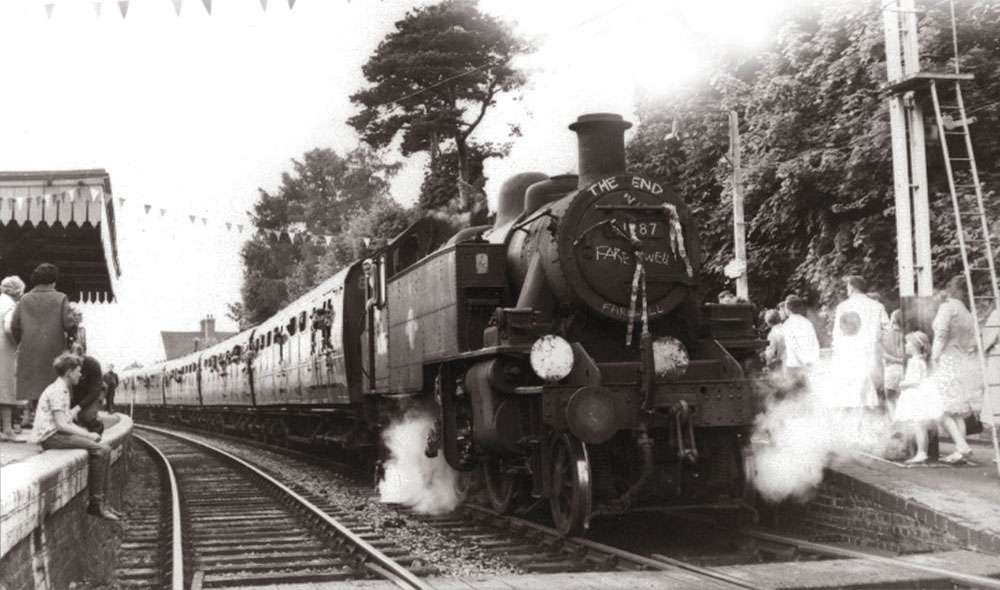
The final train on June 12th 1965 (photo Norman Hamshere)
Although the line was appreciated by many, by the 1950s it barely made a profit. Much-needed modernisation was never carried out. Although the main lines through Guildford and Horsham were electrified, the HGDR was not even upgraded to diesel. When there was a major rail strike in 1955, freight transporters were obliged to find other means of transport, and never returned to the railway. There were not many protests raised at the all-day public inquiry into the projected closure held in Cranleigh Village Hall in 1964. People realised that it was a lost cause. Its closure had been mooted by the railway even before the Beeching Report. However, it was a pity that the line closed only a few months short of completing its century. Ironically, it closed just as the big expansion of Cranleigh was beginning.
The signal box in the 1950s
The railway went out in a blaze of glory on Saturday June 12th 1965. The stations were all decorated with bunting, and 400 people crowded into the nine carriages of the final train, pulled by Ivatt 2-6-2T No. 41287. The engine’s smokebox was decorated with ribbons and the words ‘The End, Farewell, Farewell’. People cheered the train from their back gardens, at level crossings and from the platforms of every station. A local newspaper reporter wrote, ‘It might have been the royal train itself.’
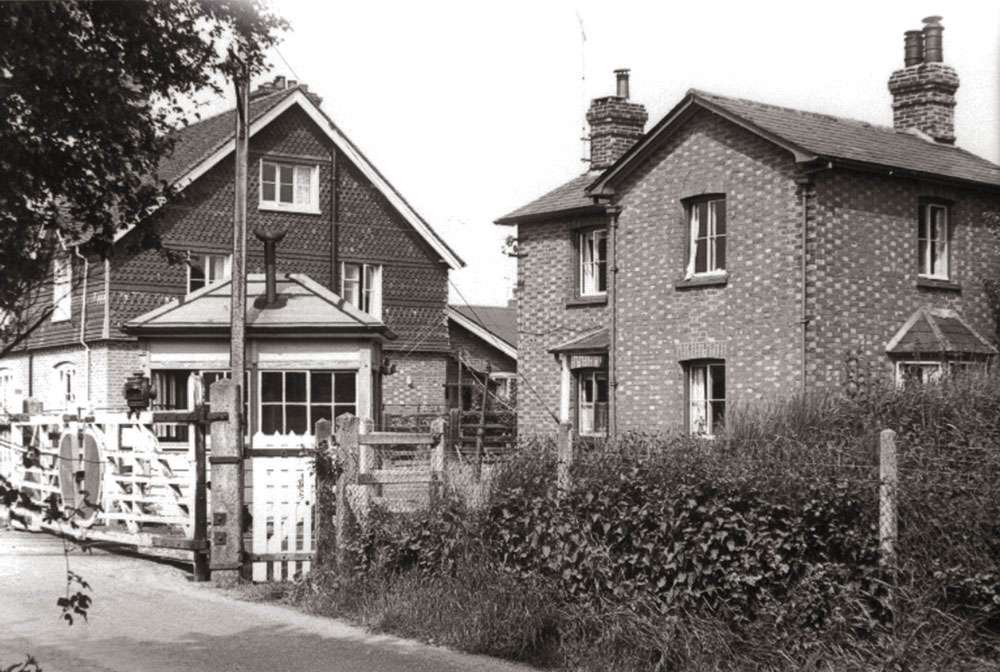
The level crossing and signalman’s house in Knowle Lane in the 1950s (courtesy of Pat Disley)
After the closure, the railway track was quickly taken up. Cranleigh station was demolished and replaced by the shops of Stocklund Square. The goods yard became a car park.
What is left today? We still have the railway bridges at Elmbridge Road and Vachery; a section of the station platform behind the Stocklund Square shops; a deserted signal by the side of the path south of Snoxhall playing fields; the houses called ‘Railway Cottages’; and above all the marvellous facility of the Downs Link Path, which follows virtually the whole length of the Horsham to Guildford Direct Railway.
The Cranleigh History Society hopes to hold its first indoor meeting since the Covid-19 pandemic on Thursday July 8th at 8.00pm in the Band Room, when Roger Nash will speak on ‘The Cokellers’. The hall will be well ventilated and the seats spaced out.

